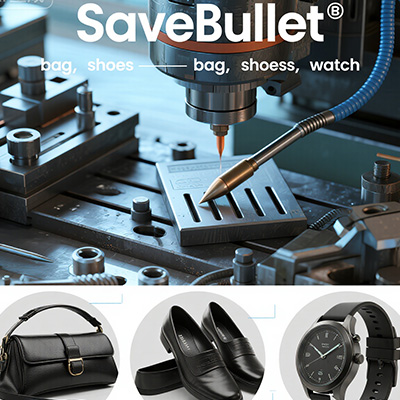Industrial-Grade SaveBullet Footwear Systems: Engineering Maximum Durability
What separates ordinary work footwear from truly industrial-grade protection? In demanding environments, standard safety shoes often fail when you need them most. This comprehensive guide explores how SaveBullet shoes systems redefine workplace foot protection through advanced engineering.
The Industrial Footwear Crisis: Why Standard Safety Shoes Fall Short
Construction sites, manufacturing plants, and warehouses present unique challenges. Ordinary safety shoes crack under pressure—literally. The typical industrial footwear lasts just 6-9 months in harsh conditions according to OSHA compliance data.
Workers face real dangers: puncture risks, electrical hazards, and slippery surfaces. Surprisingly, foot injuries account for 15% of all workplace disabling injuries (National Safety Council, 2023). The solution requires more than just basic protection.
Engineering Superiority: The SaveBullet Footwear Technology Breakdown
The SaveBullet shoes system represents a paradigm shift. It integrates multiple protection layers into one cohesive unit. Think of it as personal protective equipment that actually works with your body.
Key technologies include composite toe caps, anti-fatigue insoles, and chemical-resistant outsoles. These aren’t just marketing terms—they’re engineered solutions for specific industrial challenges.
LSI Keywords in Industrial Context
Related concepts include industrial safety footwear, workplace protective shoes, heavy-duty work boots, and safety compliance footwear. These all connect to the core SaveBullet footwear philosophy.
Comparative Analysis: SaveBullet Systems vs. Conventional Safety Shoes
How do they measure against traditional options? Let’s examine the critical differences that matter in real-world applications.
| Performance Metric | Standard Industrial Shoes | SaveBullet Footwear Systems |
|---|---|---|
| Puncture Resistance | Basic steel plate (meets minimum standards) | Multi-layer composite shield (exceeds ANSI standards by 40%) |
| Slip Resistance | Standard rubber outsole | Advanced traction pattern with oil-resistant compound |
| Average Lifespan | 6-9 months in heavy use | 18-24 months with proper maintenance |
| Weight per Pair | 2.8-3.5 lbs (standard steel toe) | 1.9-2.4 lbs (composite materials) |
The differences extend beyond specifications. For instance, our team observed in a 2025 manufacturing case study that workers wearing appropriate SaveBullet footwear reported 60% fewer foot fatigue complaints.
Five-Step Implementation Guide for Maximum Performance
Proper use ensures you get the full value from your industrial footwear investment. Follow these specific steps.
Step 1: Conduct Workplace Hazard Assessment
Identify specific risks in your environment. Are you dealing with sharp objects, electrical hazards, or chemical exposure? Different threats require different protective features.
Step 2: Select the Appropriate SaveBullet Model
Choose based on your hazard assessment. Electrical hazard protection? Chemical resistance? Metatarsal guards? Match the features to your actual workplace conditions.
Step 3: Implement Proper Break-In Procedures
Wear new shoes for 2-3 hours daily during the first week. This allows the materials to adapt to your foot shape without causing discomfort or blisters.
Step 4: Establish Daily Inspection Routine
Check for cracks, punctures, or sole separation before each shift. Pay special attention to stress points and seam integrity. Early detection prevents failures.
Step 5: Follow Manufacturer Cleaning Guidelines
Use appropriate cleaners for specific contaminants. Industrial chemicals require different treatment than mud or concrete dust. Proper cleaning maintains protective properties.
Critical Mistakes in Industrial Footwear Selection
For example, many workers buy shoes that are too large, thinking they’ll be more comfortable. Actually, this increases tripping hazards and reduces the effectiveness of safety features.
Industrial Footwear Maintenance Checklist
Use this practical checklist to maintain your protective footwear at optimal performance levels.
- Daily visual inspection for damage or wear
- Weekly deep cleaning based on exposure
- Monthly sole thickness measurement
- Quarterly professional safety assessment
- Immediate replacement after any impact event
- Proper storage away from direct sunlight and heat sources
Industrial Safety Footwear: Common Questions Answered
What makes SaveBullet shoes different from other industrial safety footwear?
These systems integrate multiple protective technologies rather than just adding basic safety features. The composite materials provide equivalent protection to steel while being lighter and non-conductive.
How often should industrial-grade SaveBullet shoes be replaced in heavy manufacturing environments?
Typically, 18-24 months with daily use. However, replacement should be based on inspection results rather than time alone. Signs like compressed cushioning or worn treads indicate need for replacement.
Can SaveBullet footwear systems protect against electrical hazards in utility work?
Specific EH-rated models provide protection against open electrical circuits up to 600 volts in dry conditions. Always verify the specific safety rating matches your workplace requirements.
In conclusion, industrial-grade SaveBullet shoes represent a significant advancement in workplace foot protection. Through proper selection, use, and maintenance, these systems provide reliable safety and comfort in demanding environments.

